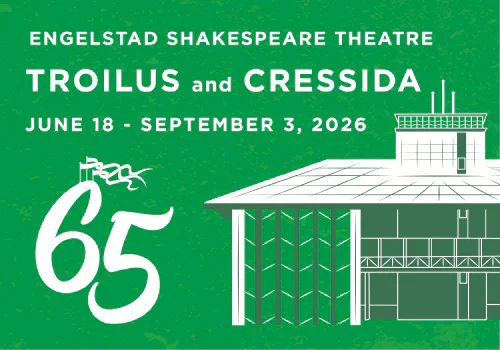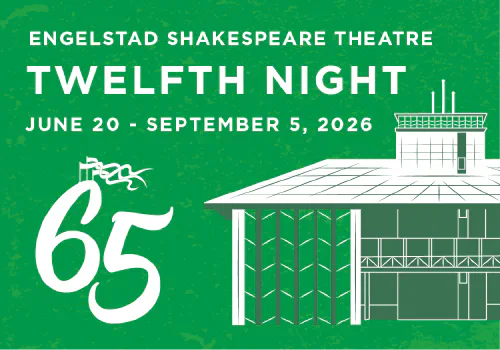By James Mills
The fin-de-siècle period in France was a time of continued disillusionment from the disastrous results of the Franco-Prussian war, of political and social division caused by the stormy Affaire Dreyfus, and of uncertainty from the inefficiency and instability of the Third Republic. It was a time of turbulence in literature when naturalism was passing from the scene and symbolism was running its course. But with Rostand’s Cyrano de Bergerac came a new impetus from neo-romantic idealism which took a struggling France into the more optimistic Belle Epoque of the early twentieth century.
After the play’s opening in 1897, Emile Faguet, the renowned literary critic, boldly declared that “A great poet decidedly appeared yesterday . . . on whom Europe is going to fix its eyes with envy, and France with a proud and hopeful delight” (Jules Haraszti, Edmond Rostand [Paris: Fontemoing et Cie, 1913], 123). (All quotations in this paper which were originally written in French have been translated into English by James Mills.) So pronounced was Rostand’s impact that it was said that “France suddenly became alive with the appearance of Cyrano” (Marc Andry, Edmond Rostand, le panache et la gloire [Paris: Plon, 1986], 78). Dubbed “the king of La Belle Epoque,” Rostand went on to dominate the French stage from 1897 until his death in 1918 (Andry, 11).
PRACTICALLY UNKNOWN. Prior to Cyrano de Bergerac, Rostand was practically unknown to the public. His play, Les Romanesques, was performed only fifty times in ten years, while La Princesse lointaine was a failure. Another play, La Samaritaine, which appeared in the same year as Cyrano, was performed only to a limited audience. Yet, other than Corneille’s Le Cid and Hugo’s Hernani, no French play has had such an immediate success as Cyrano.
As a playwright Rostand had an intimate knowledge of the theatre and “was a master craftsman, with a high degree of theatrical intelligence, with scenic sense, with a delight in solving technical difficulties” (Thomas Doyle and David Hoffman, Ed., Romeo and Juliet and Cyrano de Bergerac, trans. Howard T. Kingsbury [New York: Noble and Noble, Pub., Inc., 1963], 23). His literary masters included Shakespeare, who gave him the spirit of enchantment, Corneille, who taught him about lúesprit précieux, and Racine, who caused him to appreciate the tragic. His sense of the comic was influenced by Molière, his verve and wit by Regnaud, his use of vaudeville by Labiche, and his refinement of subtle sentiments by Marivaux. (For additional information on Rostand’s literary formation, see chapter 2 of Haraszti’s Edmond Rostand.)
The insertion of the author’s life into Cyrano has been much discussed by a number of his biographers. Alba della Fazia Amoia is one who has related the youth’s experience as a boarder at school writing love letters for a friend who then copied them to send to his girlfriend to “the immortal trio of Cyrano, Christian, and Roxane” (Edmond Rostand, Twayne Series [Boston: G. K. Hall, 1978], 63). Rostand’s wife, Rosemonde Gérard, herself a poet, included an anecdote in her book about her husband that sheds light on how the idea first came to him for Cyrano de Bergerac. While spending a summer in Luchon, he met a young man grievously disappointed in love, wrapped up in his sorrows. Later, Edmond met the young lady, who spoke passionately of the young man: “‘You know, my little Amédée, whom I had judged to be so mediocre, is marvelous; he’s a scholar, a thinker, a poet.’” (Amoia, 63). When Rostand realized that Amédée was, in reality, none of these but rather “a pale reflection of her ideal,” the idea for Cyrano was born.
HISTORICAL INACCURACIES. The historical basis for the play has also been much debated, for there was a real Cyrano who lived in the time of Louis XIII and, like the fictional character, had a large and ugly nose. However, a number of critics have pointed out the historical inaccuracies between the fictional Cyrano and the real one, none of which, however, diminishes the poetic value of the play. Martin Jacob Premsela, for example, has written that the real Cyrano was a noble, although of obscure origin, who may have been born in the domaine of Bergerac or Bergerat in the surroundings of Paris. He reminds the reader of the claim that Cyrano may have even been of Italian origin (Edmond Rostand [Amsterdam: J. M. Meulenhoff, 1933], 75, note 4). He points out that Roxane’s real name was Magdeleine Robineau, and not Robin, and that Cyrano and Montefleury remained friends, not enemies. Furthermore, he states that Cyrano did, in fact, take a protector, the Duke of Arpajon (78).
Amoia has suggested that the real Cyrano was born in Les Halles district of central Paris on 6 March 1619, and that the “de Bergerac” title appeared later when the father acquired two castles in the outskirts of Paris, one of which was known as Bergerac. As the second child, Savinien de Cyrano was authorized to use the title of the second castle to become Cyrano de Bergerac (64).
According to Amoia, the real Madeleine Robineau was married in 1635 to the Baron de Neuvillette and loved to dance and to eat and was noted for her “peach complexion” (65). She took charge of Cyrano’s social education until he enlisted as a cadet with the Noble Guards of the Gascon captain, Carbon de Casteljaloux. After being wounded in battle at Mouzon in 1639, Cyrano left the cadets to join the regiment of the Counts and participated in the siege of Arras where he and his comrades would spend the long hours smoking and playing cards.
One of the soldiers, a newlywed named the Count of Canvoye, would receive as many as three letters a day from his young bride, but it was Cyrano who supplied the rather dull husband with love poems to send back to her. Stabbed in the throat by an enemy saber, Cyrano recovered consciousness to learn that Madeleine’s husband had been killed in battle. When he returned to Paris to convalesce, he further learned that Madeleine was spending her life in prayer and penitence. However, upon seeing her in the convent he hardly recognized her for her clothes were “of the poorest sort,” and her former “peach complexion” was hidden under long grey hair. It is reported that “he fled from the convent, horrified, and vowed never to return (Amoia (65-66).
While at the residence of the Duke of Arpajon, Cyrano was struck on the head by a falling beam causing him to spend one year on the brink of death. His friend Henry le Bret assisted him, and Madeleine is said to have visited him twice. A short time after her second visit, on 28 July 1655, Cyrano died.
“THIS DISASTROUS ADVENTURE.” The play named after him was performed on 28 December 1897 at the Théâtre de la Porte-Saint-Martin with Constant Coquelin, to whom the work was dedicated, in the role of Cyrano. Initially, nobody had given the play much hope for it was a long work in five acts, expensive, with over fifty speaking parts and five décors, with complicated stage directions, and written about an anachronistic subject. In a moment of discouragement, Rostand apologized to Coquelin, saying: “Pardon! Ah! Pardon me, my friend, for having led you into this disastrous adventure” (Emile Ripert, Edmond Rostand, sa vie et son oeuvre [Paris: Hachette, 1968], 75-76).
Happily, for as long as one hour after the closing curtain, most of the audience remained in the theatre giving an enthusiastic standing ovation. A new French hero was born.
“TO SHOW, TO PREACH, TO EXALT.” The primary goal of Cyrano de Bergerac is “to show, to preach, to exalt the dignity of love” (Premsela, 68). That is the basis of the panache, rather than pride, misanthropy, or social, moral, intellectual independence. The dignity of Cyrano lies in his selflessness, while for Christian it is in his ultimate abandonment of a love that he has not earned (Premsela, 68).
It is a heroic comedy that approaches Corneillean tragedy by glorifying the efforts of energy (Haraszti, 235). It is a comedy where tragedy is much present and where death intrudes: Cyrano is killed by an enemy, Christian commits a form of suicide by throwing himself into the fore of the battle to die, and Roxane symbolically dies as she casts aside love and society for voluntary confinement in a convent (Premsela, 68).
Rostand was successful in recreating the life and atmosphere of an age, that of Louis XIII and Cardinal Richelieu and the early years of Louis XIV and Cardinal Mazarin. It was a time of national achievement, the Golden Age of French power and culture when French was the universal language of diplomacy and of polite society, and French taste and art were internationally adopted and imitated. He captured the social life of the Age of Splendor with “movement, exuberant spirit, romance, affectation, intrigue, self-sacrifice all crowded together as they were in those hectic years” (Doyle, 29). Ultimately, Rostand appealed to the collective soul of modern France seeking to find itself again.
Louis Haugmard’s claim at the end of World War I that “Cyrano de Bergerac . . . has remained the greatest theatrical success of all time,” (6) typifies the esteem in which the play was held at the time of Rostand’s death in 1918 (Edmond Rostand [Paris: E. Sansot et Cie., 1918], 6). Upon returning to his former school, the collège Stanislas, the playwright summarized the universal appeal of Cyrano de Bergerac with the following admonition to the students: “Be yourselves young Cyranos! Have panache, have soul” (Andry, 79)! Even Cyrano’s fictional rival, the Count de Guiche, recognized the hero’s greatness when he acknowledged: “He lives his life / His own life, his own way—thought, word, and deed / Free!” (Edmond Rostand, Cyrano de Bergerac, trans. Brian Hooker [New York: Bantam Books, 1981], 178. Ultimately, Cyrano’s integrity remains intact and his panache untarnished.










